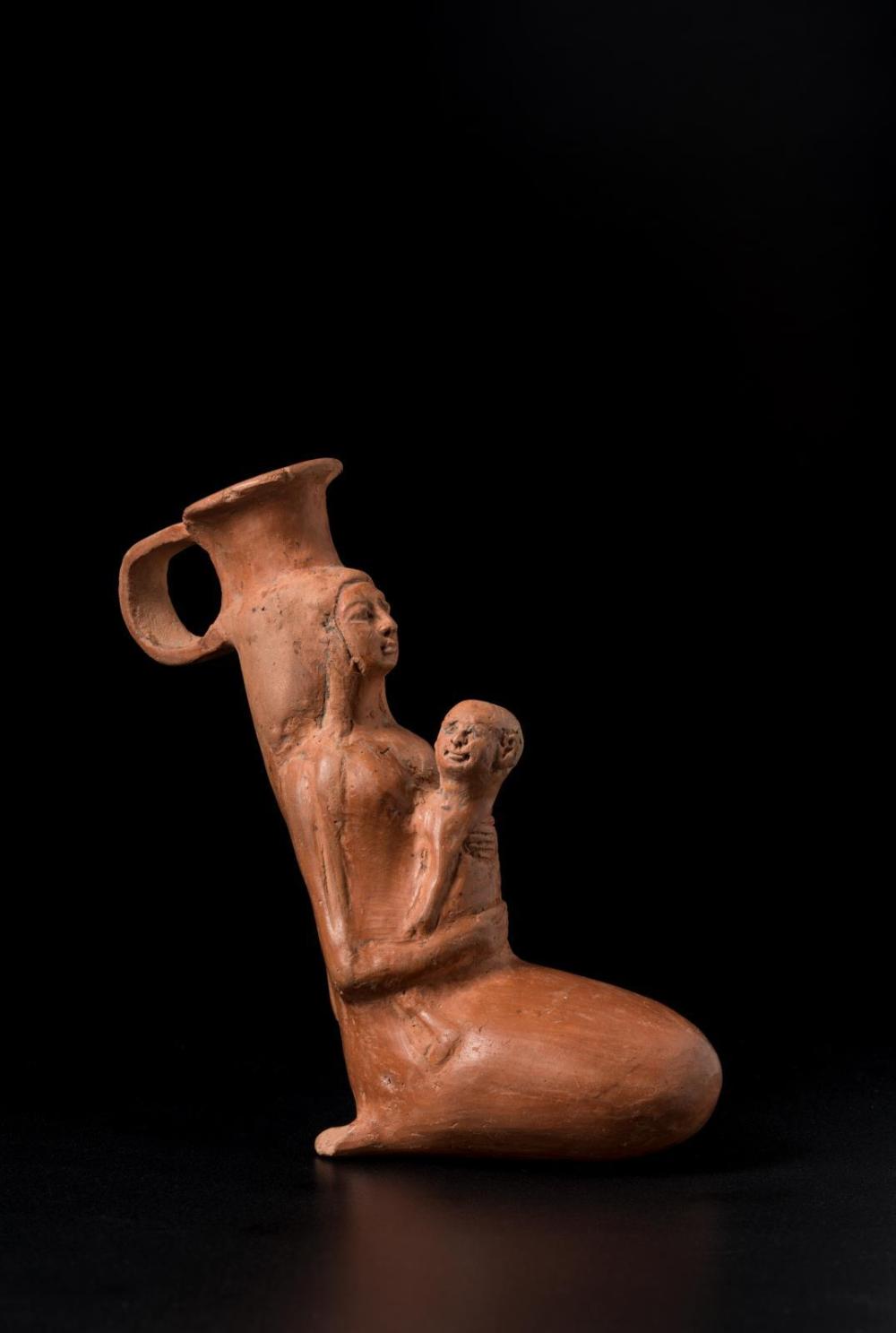Advanced Search
Figure vase in the form of a woman and child
Egyptian
New Kingdom, mid-Dynasty 18
1435–1380 B.C.
Medium/Technique
Pottery, red polished clay
Dimensions
Height x width x depth: 14 x 5.3 x 8 cm (5 1/2 x 2 1/16 x 3 1/8 in.)
Credit Line
Frank B. Bemis Fund
Accession Number1985.336
NOT ON VIEW
CollectionsAncient Egypt, Nubia and the Near East
ClassificationsVessels
DescriptionThis delightful little bottle takes the form of a kneeling woman, holding a child about to nurse in her lap. A consummate example of the potter's craft, the bottle was made in several parts, probably using molds, with incised details added later. The entire vessel was then covered with a reddish brown slip or wash and was heavily burnished, skillfully concealing the joins. The small size, fanciful shape, and distinctive reddish brown color identify this bottle as one of a select group of pottery containers known as figure vases. The category includes other figural vessels in the shape of a standing woman carrying a basket or playing a lute, or with necks in the form of a woman's head, as well as vessels in the form of wildlife such as fish, grasshoppers, hedgehogs, or reclining ibexes with fawns. Another related group cleverly imitates leather bags or stone vessels. Figure vases are fairly restricted in date to a period of some forty years at most, from the end of the reign of Thutmose III to the beginning of the reign of Amenhotep III.
Nursing-woman vases form a distinct subgroup of figure vases. Other known examples are so similar to Boston's in size and composition that they all must have been made by the same potters using the same molds. Their small size and narrow mouths suggest that they were meant to contain some precious, perishable substance such as a cosmetic or medicine, perhaps even mother's milk. Mother's milk was used in ancient Egypt as an ingredient in various medical prescriptions, not all of them pediatric. The vessel's capacity is roughly equal to the amount a single breast produces at one feeding.
The subject of this bottle, so evocative of Isis and Horus, may have held a reassuring message in any of a number of contexts, funerary or otherwise. As the son of Isis and Osiris, Horus was the rightful heir to Egypt's throne. To hide him from his jealous uncle Seth, Isis took the infant Horus to the Delta marshes, shielding him with her magic from snakes and scorpions. Isis therefore became in the Egyptian consciousness the archetypal protective mother.
Nursing-woman vases form a distinct subgroup of figure vases. Other known examples are so similar to Boston's in size and composition that they all must have been made by the same potters using the same molds. Their small size and narrow mouths suggest that they were meant to contain some precious, perishable substance such as a cosmetic or medicine, perhaps even mother's milk. Mother's milk was used in ancient Egypt as an ingredient in various medical prescriptions, not all of them pediatric. The vessel's capacity is roughly equal to the amount a single breast produces at one feeding.
The subject of this bottle, so evocative of Isis and Horus, may have held a reassuring message in any of a number of contexts, funerary or otherwise. As the son of Isis and Osiris, Horus was the rightful heir to Egypt's throne. To hide him from his jealous uncle Seth, Isis took the infant Horus to the Delta marshes, shielding him with her magic from snakes and scorpions. Isis therefore became in the Egyptian consciousness the archetypal protective mother.
ProvenanceBy 1985: with Jean-Louis Domercq, Galerie du Sycamore, Paris; 1985: purchased by the MFA from Jean-Louis Domercq, June 26, 1985.
(Accession Date: June 26, 1985)
(Accession Date: June 26, 1985)




